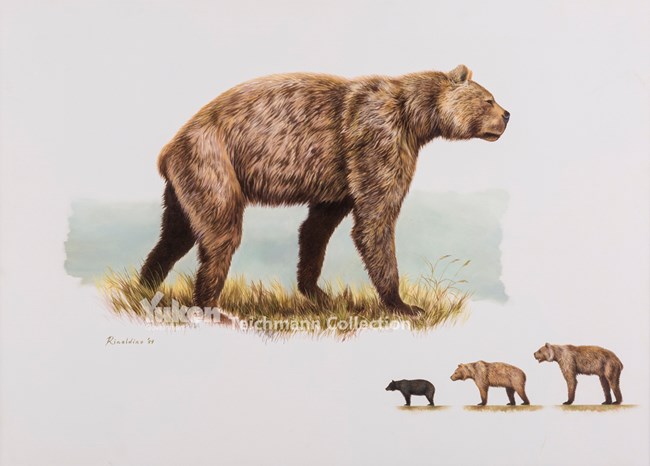
"Giant Short Faced Bear" by George Rinaldino Teichmann copyright 1999 Yulon Government Collection The largest carnivore that called the Bering Land Bridge home was a true giant. Other bones reveal its skeleton was not designed for fighting, but, instead, was built for efficient, long-distance travel. Together, these clues reveal the bear was a scavenger, not a hunter. The open tundra-steppe, where it could easily find the kills of other predators, was its perfect home. |
Last updated: April 15, 2015
